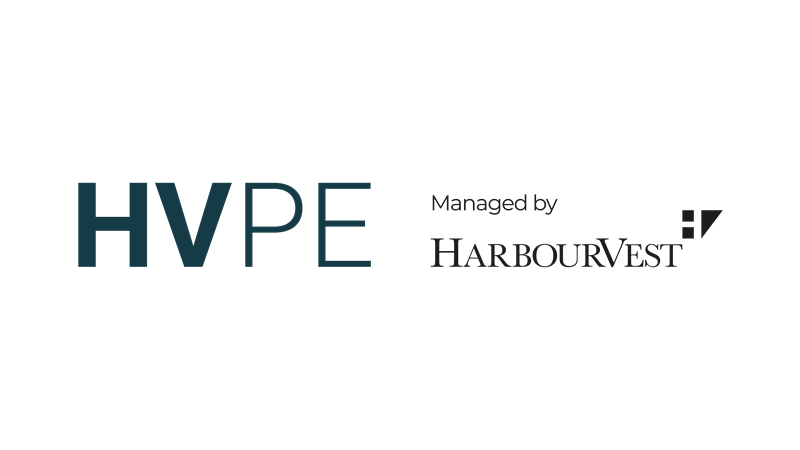The Multifaceted Climate Change Challenge - The Role Of Measurement, Resilience, Biodiversity And Engagement
Partner Content provided by WM Nexus
The investment world faces an historic challenge in measuring sustainability and impact across multiple sectors and markets to adapt and risk-proof portfolios.
Panellists including Bruno De Kegel, founder of Arvella Investments and Sustainability investment consultant Per Stahl debated ‘rethinking the climate change narrative’ including the huge amount of work required to measure progress towards meeting the Paris climate goals.
Lesley Dickie, CEO of the Durrell Wildlife Conservation Trust and Abhilash Panda, head of infrastructure resilience with the UN’s Office for Disaster Risk Reduction (UNDRR) brought their own expert perspective discussing what needs to be done to measure impact in terms of maintaining and restoring biodiversity and incorporating resilience against disasters from cyber to cyclones also in the context of climate change.
Measuring against Paris targets
De Kegel framed the question in terms of how investors fight climate change using their portfolio.
He said the commonly used carbon footprint measure “doesn’t tell you what you have spent, where you are going and what your remaining carbon budget is”.
Avoiding the brown sectors and investing in green ones works, but “at some point, you start pushing against your diversification constraints”.
He suggested using scope one or two in terms of emissions generated was not credible. For example, with car manufacturing over 90 per cent of emissions fall within scope three.
However, with established science from the IPCC and the International Energy Agency, you can begin to allocate the remaining carbon budget to countries and regions in terms of what they need to do to stay within a 1.5 degree rise by 2050 and then import that into finance. Arvella has applied this to 7,000 companies, enabling them to calculate the alignment of any client portfolio to the Paris Agreement
They then looked at ~100 funds with the word climate in the title but could not find a single global equity offering aligned with a scenario below two degrees of warming.
It means Arvella has a metric, expressed as a simple temperature in degrees Celsius, to enable an informed discussion with clients and a challenge to pose to asset managers.
Embracing tech for the circular economy
Stahl said it is undeniable that investing in sustainably focused solutions and infrastructure made good business sense.
He suggested that the current, mainly linear production and consumption pattern is becoming increasingly circular, but it is difficult to make these changes economically competitive against a linear system which has been refined for such a long time. However, firms embracing circular economic methods have great promise, and it’s a sector which many family office investors are focusing on.
He said: “The techs that can close that circle will find themselves in a very interesting situation. These new businesses and new models will bring a major shift in how the world is operating.”
He said the question is if the general investment community will have access to these companies, because it remains unclear how soon these new businesses and solution providers will be introduced on, and gain momentum in the public markets, or if they continue to remain in private equity for now.
Stahl also suggested that work is underway, led by a group of family offices, with the aim of finding means to accelerate the deployment of significant institutional capital into the environmental and sustainable investment sectors. By providing risk mitigating mechanisms in order to satisfy the conservative approach pension funds and other institutions traditionally take towards new asset classes, it the goal is to supercharge the sector and provide the capital required to affect significant impact.
Biodiversity metrics required
Dickie said the risk from a collapse in biodiversity cannot be overstated with pollinators the best appreciated but certainly not the only risk.
She believed Covid-19 had shifted the dialogue on biodiversity with an increasing acknowledgement of how it interacts with climate change too.
However, she added: “It is still not getting as much traction as it should be. I would like to see how nature-based solutions and investment markets can start interacting more.”
She said that recent research which Durrell had conducted with investment managers saw them all talking about the same companies.
“It made me realise that actually, the range of sustainable investments is not as wide as it should be and certainly when we questioned about biodiversity metrics, there was not much at all.”
“We're still in a place where climate and biodiversity are not normal questions asked of investments. It should be part and parcel of the process.”
Exposure to climate risk still not reckoned with
Panda noted that according to Swiss Re, the total insured losses from natural hazards and human induced disasters in 2020 was roughly estimated at $187 billion, up by 25% from 2019. This is just the insured losses, and the indirect socio-economic costs of disasters are many times greater.
“We have only a scant understanding of the damage to and losses of ecosystems as a result of these disasters.”
He suggested that the investment world has been slow to respond.
“From the public sector and the financial sector, investment decisions are not yet considering disaster risks at the transactional level. UK pension schemes with roughly £2 trillion assets under management are highly exposed to climate related risk. The continued reliance on short term horizons, as the basis for financial decisions remains a significant concern. We need to look at this more closely because the consequences of this are unfolding in real time.”
De Kegel suggested investors can think of climate risk in two ways.
Physical risk can be thought of as damage to your assets due to extreme weather events or changing weather patterns, such as rising sea levels.
Transition risk, he says, is regulatory risk or risk of exposure to changing consumer habits.
He explained: “As a company you can find yourself on the wrong side of the fence and it can have serious implications for your business model and is very expensive to fix putting a serious dent in your profitability.
“Yet by and large, when we are asked to X-ray portfolios for our clients, we see most are aligned with world temperatures rising by three degrees.
“We have this sense the investment community still assigns a very low probability to a bad climate change outcome which gives us a disconnect, because climate change science is telling us the baseline scenario is disaster unless we act very quickly.”
Dickie added: “You have that single metric for climate. But what does the two degrees target mean for something as complex as biodiversity?”
A measure for recovering ecosystems
One challenge is understanding what interventions might be needed not just to remove pressure on an eco-system, but to understand what would be needed for a system to recover.
There is a red list for endangered species. Now a green list is being created to consider if a species has fully recovered. The next challenge, Dickie said, is to understand what that means for a fully recovered ecosystem.
“There has to be a big shift in thinking in terms of how we really get to the metrics that would tell us what an investment portfolio’s doing to biodiversity. Rather than just saying: ‘Well, we've decided not to invest in this company because it leads to deforestation. What's the positive investment scenario that we need to understand?’”
The risk of risk-washing
Panda suggested in terms of resilience the investment case is already established, just not yet embraced.
He said: “Sustainability and resilience are two sides of the same coin. Investing in prevention makes good financial sense. We did an analysis looking at global investments of roughly $1.6 trillion in appropriate risk prevention strategies and we could potentially avoid losses of $6.4 trillion.
“Yet we don't see investments to prevent and adapt to changing climate. Prevention is still not being seen in impact bonds or the sustainability-linked bonds or environment-link bonds. There is still miles to go on that side.”
“We have public and private investments in billions going into new airports, bridges, real estate, without taking consideration of current and potential future risks.”
He said the question is whether investments are really risk informed. “If not, then borrowing a phrase here, from the greenwashing side, are we actually risk-washing our investments?”
Dickie added: “We've used air, sea, forests, animals to advance our economy. But no one's really been paying for it or not paying for it properly. And I still don't see that true willingness to pay for the global commons. It will have to come from a regulatory perspective. I don't think the markets will move fast enough.”
Regulation, engagement… the next phase of planet positive investing
Stahl suggested regulation could be framed more positively.
“When we talk about regulation, we talk about preventative and restrictive measures. There are examples of companies that have used regulation as a tool to control their markets.
“One is Norsk Gjenvinning, a waste management company in Norway. A new CEO restructured the whole business model, and then aligned that with regulation, self-imposed regulation but also pushing on the government to change the rules.
“By doing so, the company won a significant share of their markets, changing from being a waste disposal into a resource company. It can be a powerful way to gain the advantage and affect change.”
De Kegel said there were two ways of promoting positive change – one is providing the capital to do so whether through equity or debt but the second – engagement - can have a bigger and faster impact.
“It allows you to have a more direct impact by sitting down with company management and creating better ESG outcomes. From a valuation point of view, unexpected improvements in a company in terms of ESG, have the potential for a one-off incremental return that is not priced in.”
John Lappin is Contributing Editor at WM Nexus
© The Sortino Group Ltd
All Rights Reserved. No part of this publication may be reproduced, stored in a retrieval system or transmitted in any form or by any means, electronic, mechanical, photocopying, recording or scanning or otherwise, except under the terms of the Copyright, Designs and Patents Act 1988 or under the terms of a licence issued by the Copyright Licensing Agency or other Reprographic Rights Organisation, without the written permission of the publisher. For more information about reprints from AlphaWeek, click here.







